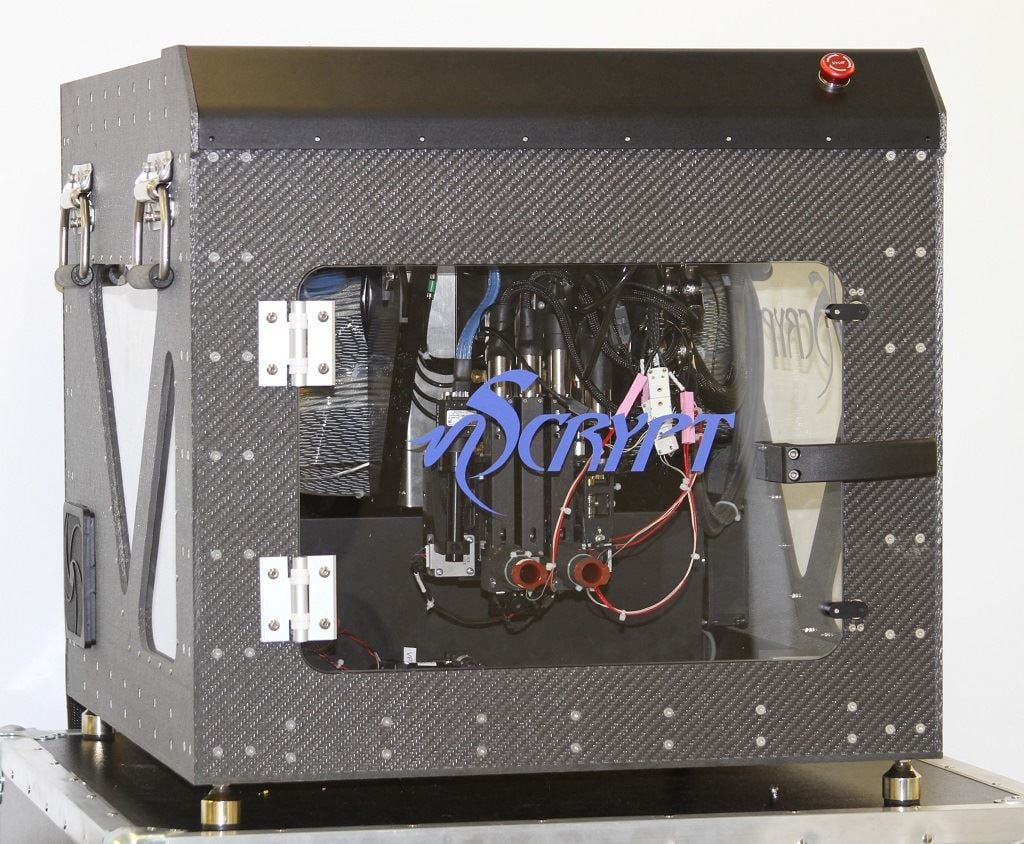![The ruggedized BAT bioprinter [Image: nScrypt]](https://fabbaloo.com/wp-content/uploads/2020/05/nscyrpt1a_img_5eb095980290d.jpg)
An nScrypt bioprinter is ready for desert conditions to test in-the-field critical care.
Most of the time when we think “bioprinting,” we think 3D printed organs: a heart, for example, made from a patient’s own cells, ready to be transplanted with no fear of rejection. Those, and many other, bioprinting applications are the future — but not necessarily the near-term future. Maybe in the next decade or two we’ll start to see human testing as R&D moves us ever closer to shortening organ transplant lists, but for right now it seems that a lot of bioprinting is still a little bit Star Trek.
But not all.
An announcement today from nScrypt charmingly breaks out the term “ruggedized” to describe their latest bioprinter to be deployed.
The Florida-based company is no stranger to “ruggedizing,” with its bioprinting work already gearing up for out-of-this-world 3D printing — literally, with an installation for the International Space Station slated for launch next month. Clearly that also needs to be a robust system.
The newest, though is also called an “austere” bioprinter, and for good reason: it’s going to the desert.
![The ruggedized setup for the specialized BAT bioprinter [Image: nScrypt]](https://fabbaloo.com/wp-content/uploads/2020/05/nscrypt2a_img_5eb0959869f0c.jpg)
In partnership with the US Military, the Uniformed Services University 4D Bio 3 Program, and The Geneva Foundation, nScrypt’s BioAssembly Tool (BAT) bioprinter is moving “out of sterile biology laboratories to forward-deployed military positions.”
It doesn’t get much less sterile than desert deployments. Wind, sand, dirt, heat, cold: the desert isn’t for the faint of heart, even if that heart might be bioprinted. It won’t be, though, in this case: ten weeks of experiments with the ruggedized BAT will be creating plastic medical models, mesenchymal stem cells, and next-gen wound bandages.
The goal for this deployment is working with the system in field conditions to see how it might serve deployed troops.
nScrypt notes of the project goals:
“Bioprinting a variety of wound-healing biologics, bandages, stents, and bandage/biosensors, on demand and at or near the point-of-care, is an example that is expected to improve healing and survival rates of the warfighter. Point-of-care bioprinting is also expected to provide significant advantages in soldier care and military applications, reducing expensive and wasteful logistics, warehousing, refrigeration, and shipping. Bioprinting only what the soldier needs, where it is needed, and when it is needed, is expected to improve outcomes and reduce overall costs of advanced medicine for our warfighter.”
War is a lot of things: sterile isn’t one of them. It is, though, often far from supplies, which is why we are more frequently seeing 3D printers head into the field with troops. Most often today, these 3D printers are making spare parts to help equipment keep running.
Bringing a bioprinter into the field along with replacement parts-focused machines ensures that both the people and their tools can keep running.
Bioprinting bandages and stents can help with immediate relief for wounded individuals, offering advanced first aid right where it’s needed.
The modified BAT will spend its ten weeks in “an undisclosed, forward-deployed location” in research led by LTC Jason Barnhill of the United States Military Academy’s Department of Chemistry and Life Science (West Point).
Via nScrypt











FELIXprinters has released a new bioprinter, the FELIX BIOprinter, which is quite a change for the long-time 3D printer manufacturer.